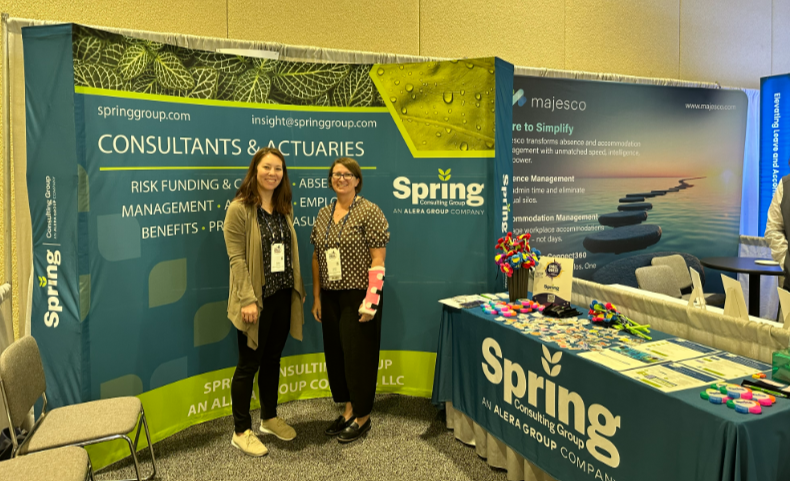Q1: What does it mean when a company “transfers” pension risk?
At a high level, it means the company is looking to reduce or offload the financial uncertainty tied to its pension obligations. That typically happens in one of two ways: either by offering terminated employees a one-time lump-sum payment, or by transferring the responsibility for future pension payments to an insurance company through the purchase of an annuity contract.
For the company, it’s about getting pension liabilities off the books and reducing exposure to things like interest rate swings, longevity risk, or investment volatility. It’s essentially a financial risk management strategy, but it has big implications for both the balance sheet and the participants.
Q2: Why are so many companies pursuing this right now?
The environment is favorable at the moment and has been for several years. Many pension plans are well or overfunded, partly due to the high interest rate environment, which means the present value of future liabilities has come down. That creates a window of opportunity because it’s more affordable to transfer pension obligations when the plan has a funding cushion.
At the same time, there’s increasing pressure from boards, investors, and regulators to reduce long-term financial volatility. For many employers, especially in sectors like healthcare and manufacturing, pension plans are legacy liabilities that no longer align with current business strategy. Transferring that risk, either to an insurer or through a captive, has become a compelling strategy.
Q3: What are the main ways companies transfer pension risk?
The most common approaches we see are offering lump sums to terminated vested participants or purchasing annuities from insurance companies. Both of these methods shift the liability off the sponsor’s balance sheet, but they come with different timing, regulatory, and cost considerations.
There’s also a “buy-in,” where the pension plan still holds the liability but uses an annuity contract as a hedge to match those obligations. This is often a strategic interim step as a plan approaches termination.
And now, more recently with our guidance, we’re seeing employers explore the use of their own captive insurance companies. While common in Europe, this is a newer development in the U.S. that is gaining traction, especially among organizations with overfunded plans or illiquid assets that would otherwise be penalized in a traditional market transaction. The idea is to retain some control while still taking meaningful steps toward de-risking.
Q4: We’ve heard about using captives in this space. How does that work?
In simple terms, the pension plan purchases an annuity contract from a captive insurance company that’s owned by the employer. The captive then takes on the obligation to pay the retirement benefits, often backed by reinsurance. Structurally, it’s very similar to how employers already fund other ERISA-covered benefits like disability or life insurance through a captive.
We recently worked with a leading cancer research and healthcare institute that already had a Vermont-domiciled captive. We helped them set up a separate cell within the captive specifically for pension risk. The Department of Labor reviewed the structure and granted a prohibited transaction exemption, making it the first ERISA-approved pension transfer into a captive. That approval opened the door for other organizations to explore this approach.
Q5: What’s the advantage of using a captive insurance company for this instead of a commercial carrier?
It gives the employer more flexibility and control. In the case of the healthcare institute mentioned earlier, the commercial insurance market was uncomfortable with the shape of their pension liability and was charging significantly more to take on the risk. By using their captive, they were able to assume the liability internally, with proper fronting and reinsurance, and realize projected financial benefits of over $120 million on the premium alone.
Additionally, our client will be able to transfer the trust assets directly to the captive – avoiding significant haircuts on their illiquid assets.
And they didn’t just keep the savings to themselves. As part of the DOL-approved structure, they used some of those funds to provide a one-time cost-of-living adjustment for retirees. So the outcome benefited both the organization and its participants. That’s the power of this approach. It’s not just about risk transfer — it’s about doing it in a way that aligns with your values and financial goals.
Q6: Are there risks to going the captive route?
There are definitely risks, and the process isn’t simple. When you use a captive to take on pension liabilities, you’re retaining some of the investment and longevity risk, at least in the near term. And because you’re transferring ERISA-covered obligations to a related party, it requires a prohibited transaction exemption from the Department of Labor — which is a highly detailed and rigorous regulatory process.
That said, we had the opportunity to help a major healthcare and cancer research institute become the first organization in history to receive ERISA approval for transferring pension risk into a captive structure. That was a groundbreaking moment. It’s not just a win for that one sponsor — it opens the door for other organizations to approach pension risk more strategically and cost-effectively.
We worked closely with them through every step, from actuarial modeling and structuring the captive cell to direct engagement with the Department of Labor. A big part of the success was treating the captive like a fully functional insurer, with strong governance, appropriate capitalization, and a clear segregation of the pension risk. So yes, there are hurdles, but with the right team and a strong rationale, it’s absolutely achievable — and the precedent we helped set is already starting to shift the landscape for other plan sponsors.
Q7: How do you help clients decide whether a captive makes sense?
It comes down to modeling and understanding the broader context. We look at the plan’s funded status, the company’s risk tolerance, whether a captive already exists, and what types of assets are in the trust.
For example, in the case of the healthcare institute, they had a well-funded plan but also held a significant amount of illiquid investments. If they had gone the traditional route and purchased an annuity in the market, they would’ve needed to liquidate those assets — likely at a loss. Using the captive allowed them to avoid that inefficiency and structure a transaction that worked better from both a financial and operational perspective.
That’s why it’s so important to tailor the solution to the organization’s fact pattern. There’s no one-size-fits-all approach here.
Q8: What’s your advice for companies thinking about this?
My advice is to start with a feasibility study. Even if you’re not planning to move forward immediately, taking the time to assess your options in a structured way can be incredibly valuable. Every pension plan is different — different funding levels, investment profiles, participant demographics, and organizational goals. A feasibility study helps you understand what’s possible based on your unique circumstances.
That process should include working closely with unbiased actuaries and consultants to model out different risk transfer strategies. Whether it’s a traditional annuity purchase, a lump-sum window, or a captive structure, each approach has its own tradeoffs. The right strategy often depends on things like your plan’s funded status, asset mix, existing captive infrastructure, and long-term financial goals.
We’ve found that the earlier sponsors engage in that kind of planning, the more flexibility they have. Even simple steps like cleaning up data or segmenting your liability profile can create opportunities down the line. And if a captive solution is on the table, the earlier you start understanding the regulatory landscape — especially around ERISA exemptions — the better positioned you’ll be.


